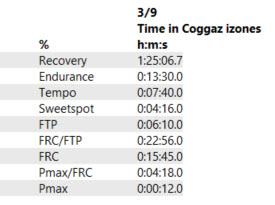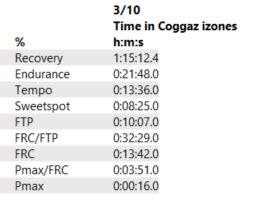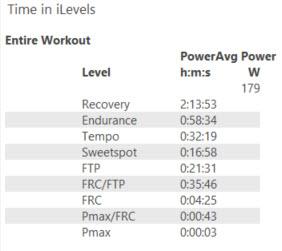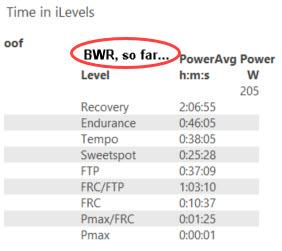2019 Canyon Belgian Waffle Ride: When Good Plans Go Sideways. A Lesson In Humility
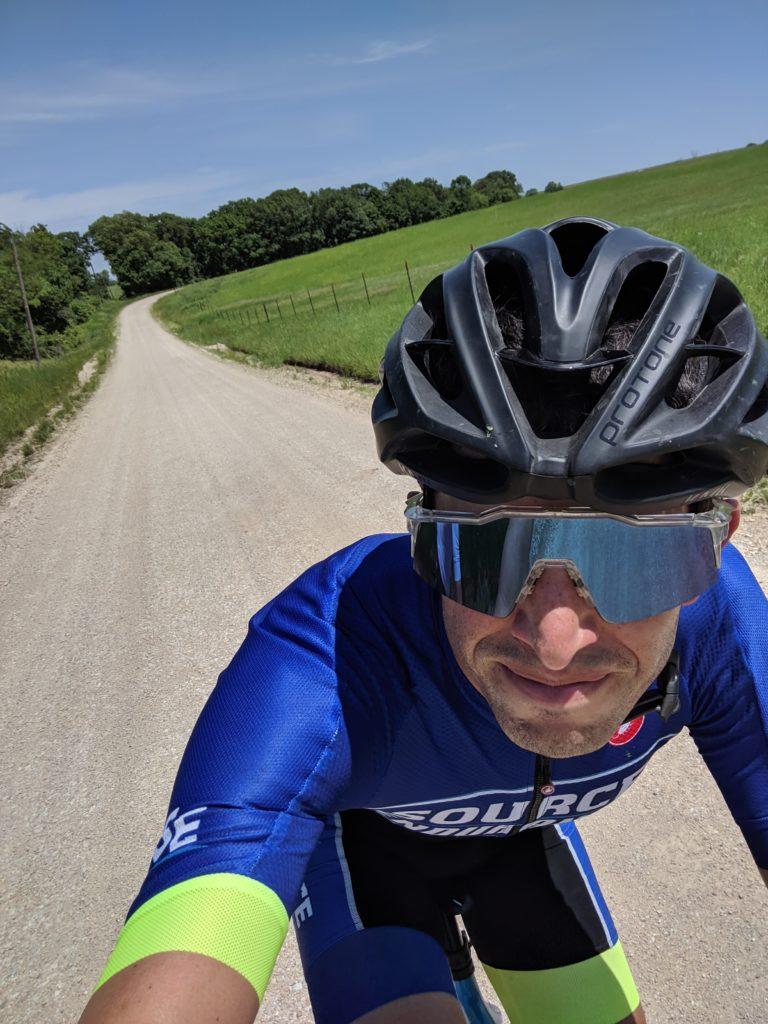
When I first moved to SoCal in late 2014, I heard of this groovy and “weird” ride in San Marcos called the Belgian Waffle Ride. It went on dirt some, pavement lots, and was ridiculously hard. Back in Kansas, we always took gravel roads and dirt paths as connectors between cool roads. Also, with my cyclocross background, this seemed right up my alley. In my first attempt I was 11th. I thought it was good, some people thought I could do better. While I’ve never able to duplicate that 11th place from 2016, I’ve always wanted to give it a good proper try. I thought this year would be the year.
The Plan
Let’s be completely honest and not mince words. I wasn’t going to win. I wasn’t even capable of riding in the front group with guys the likes of Peter Stetina, Colin Strickland, Eric Marcotte, etc. I don’t have a history of riding in groups with established Professionals (or ex-pros) and to think that would change on this day would be silly, and stupid. However, I do know that, with my fitness, experience off road, and my insider knowledge of the course, I could ride with them for some amount of time without paying too high a penalty. That was the basis of my PLAN.
Okay, let’s have a look at the BWR power file through a couple of different lenses.
First, the power file with heart rate and elevation for reference:
This is a simple chart and something you can find from many athletes on Strava. It’s also about what you’d expect from a non-podium contender trying to fake it into front group. The first part of the ride is the hardest as the battle for position is on. Then, over the course of the day, fatigue sets in, any mistake I’d made in fueling or hydrating began to compound itself, and you can see a gradual drop in output. Finally, at the bitter end you can see where the “race” becomes a “ride to the finish line.”
Fatigue is a factor in any athletic event or competition and we can look for telltale signs of it. One easy way is to apply a heat map to the power file. We’ll do that here:
I smoothed a little bit so you’ll be able to more easily see the power zone being impacted. Take a look at the beginning and pay heed to all those red and dark red spikes in the output. That’s what it takes to make the front group of the BWR for the first 90 minutes or so. Let’s take a closer look…
It’s All Fun and Games When You’re Feeling Good
Oof. This is not the best way to begin one of the hardest one-day events in America. But it’s also necessary. The turn onto the single-track can’t make your day (as I demonstrate first hand) but it can definitely cost you a chance at a podium. I have video of my entry into the single-track and I can count that I was 12th off the tarmac. That’s a key to success in the BWR but only one key. I had passed that test, and the investment of energy that I put into that strategic point of the race seemed to pay off. Or did it…
All in all, I did about 32 minutes of work at or above Functional Threshold Power (FTP). 27 minutes of that was VO2 power or higher. That’s a lot of fatigue accumulated in the first 64 minutes of the day. Far more than I had assumed. In hindsight, it was about right for the BWR when accounting for how much higher quality the contenders have become, even since 2016 when I did my first one. That translates to 4.48 Nw/kg for this first hour and that was just to make the front group!
I will say that riding in the dirt with these athletes was probably the most fun I’ve ever had on the dirt of San Diego County. We were all ripping fast and safe at the same time. Everyone in the group gave each other the professional courtesy of space and clear lines, knowing that, at the speeds we were traveling, passing was more or less not happening. The game was “go fast, go smooth” and it was afoot.
My original plan called for me to sit up and ride the Highland Valley Climb at a “manageable pace.” It was here when I first realized that I had made a mistake by stubbornly staying in the front group(s) until the base of the climb. Those explosive efforts in the early dirt section had left too much fatigue. Wisdom has taught me that the majority of the contenders would begin to fade around 2.5 hours or 2500kJ whichever came first. All I had to do was hang on until then and the pace would become much more reasonable. I was both correct and incorrect at the same time.
Digging the Hole Deeper
These next 2 hours of the BWR were probably the most strategically important of the entire day for me. This is where nearly all of the extended climbing takes place and it’s where most of the selection will happen. Going uphill tends to be the great equalizer and separating yourself from the others seems like a great idea, forgetting completely about the next 3+ hours when you need those same people to help in the second half of the day. Here’s where my desire to maintain my position in “Group 2” (Group 1 and 2 had wisely joined up making us the new Group 1) clashed with my ability level. I overextended a little too much for far too long. Yes, the competition at the BWR had improved at the top level. Yes, the field is deeper than before. But I was still with the same quality of riders I’ve always been with. There were just more of them.
It’s likely that I completely misread the mindset of Group 2 and Group 3. We seemed determined to try and drag back the strongest riders by pedaling really hard uphill. Never mind the futility of that strategy or that, with minutes to pull back, we needed a big group together at the top who would be fresh enough to ride hard the entire return trip. We were all riding to drop everyone else before the halfway point. It wasn’t until nearly the top of Mesa Grande where I realized how deep of a hole I had dug myself. Right about here I realized it was going to be a long day. Maybe, just maybe, I could hide a bit, eat a lot, and drink a lot and get some mojo back.
Looking back on the power file, I realize how horribly hard this stretch was for me and exactly how much I should have sat up and waited for the next group.
I spent about 81 minutes of the 2 hours at or above my FTP. That’s not something you can come back from as you begin your 4th hour of the race. And there’s a lot of yellow and orange showing a lot of high intensity.
The Spiral Begins
Finally, we began to go downhill for a change. But the previous 3 hours at 4.1 Nw/kg had completely done away with any of the feel-good vibes I had at the beginning. I took my pulls and used every trick I knew to get a better draft. But the effort from before was starting to catch up with me. Somewhere on the final ascent of Black Canyon I fell out of Group 2. Then shortly after, Group 3 rode straight past me too. The Sandy Bandy Sector was especially fun but also incredibly difficult. Tired legs don’t like making the explosive efforts needed in single-track. There was a lot of single-track and short, steep climbs still to come.
I’d done my part making this next 2 hours as easy as possible on myself. Output dropped to 3.1Nw/kg for this phase as I managed to keep ~50% of the time pedaling very easy or coasting. Finally, something went to plan. The 12 minutes I spent above FTP were on steep climbs or single-track, which was necessary to move forward. The clustering of higher power efforts late in this snapshot show what it’s like to ride Sandy Bandy “easy.” It’s still tough. It always is.
The Spiral Steepens
This sector can make you believe you’re destined for BWR greatness. It can also be a harbinger of a very slow and very painful BWR finish. There wasn’t much climbing in this hour-ish long sector of primarily dirt. And on paper, it’s flat with lots of straight-ish lines. However, everyone is presented with a block headwind, which makes drafting key. It’s also nearly all dirt or loose gravel, which negates the draft effect for everyone besides those highly-skilled or that deem the risk of pinch flatting “worth it.” Given my years of living 3 blocks from 9 miles of fast single-track when I lived in Kansas, I was able to draft. Also, confidentially, I didn’t really care if I flatted. A rest would be good for me. At that point, I was in the midst of being dropped by faster groups as I was seriously paying for my early race efforts.
Output dropped yet again to 2.9w/kg and I managed to keep >50% of my pedaling either non-existent (coasting) or very easy. The downhill nature of this sector really helped me too. Downhill is good. Uphill, as I had learned, was hard. However, I was really fading now as my output at or above threshold remained at ~9 minutes per hour. It wasn’t going to get much better on the day. And with the final sectors of BWR being predominantly uphill, I wasn’t really looking forward to it.
What was going on? I’ve ridden as easy as possible the last couple of hours. Why was I still unable to ride at any hard intensity for any amount of time? How did I dig this hole? Were there any more “sticky waffles” from a BWR vehicle I could take advantage of? The answer to the last one was “no” but let’s look at some of the reasoning….
I went over the power file with Coach Kristen Arnold as part of this article. We learned a lot about limits and how to spot them. While I would have benefitted from her Game Day Nutrition Plan, that wasn’t the only answer to my performance failure. I had asked myself to ride at a level I wasn’t trained for or prepared for. I didn’t do the training to earn the ability to ride that fast for that long and, while I wanted to ride faster, I simply couldn’t. I was tired.
Expecting to perform better than a “normal” day on demand is what we do at Source Endurance. That day, I performed at a level unseen yet in 2019. Here are the Time in iLevels from biggest 3 days of training in the 60 days leading up to the BWR. March 9-10 was during the Tour de Murietta (ToM) where I doubled up and raced the Masters and Elite Men. The days are summated so the ToM days are two races with an hour or so between them. The third was a long training ride on April 24. I had already gone above and beyond what I had done on my toughest training days. That means I was properly peaked for this day. The bad news was that I still had almost 2 hours and 2400’ (730m) climbing before I would finish. Oh boy….
The Bitter End
I’ve always taken a liking to seeing even the best riders suffer. Peter Sagan suffers, we just don’t see it often. But there’s something brutally honest about seeing a highly-trained athlete crack. I’m not nearly at a super-star level but I also don’t crack wide open very often. That day, was rare. It was humbling. For the last 1:43 I was dropped by every group I tried to ride in. I had already been dropped by every group but those groups were racing. I was being dropped by athletes who were just riding to the finish line. At least I was consistent.
Of note with this heat map display is that I was so fatigued I could only muster 3:11 of time at or above FTP intensity. This is what it looks like when you crack.
In my darkest BWR hours, things became a lot of fun. I had some friends ride up to me and remark about how slow I was going. We started talking and they rode in with me. But that’s not all. We got so much encouragement from everyone who caught us and rocketed by as they yelled, “Looking good. Keep it up!” Among them were more friends, the lead women, and new friends to be. For the first time in a long time that day, the people of the BWR were lifting me up.
At the base of the daunting Double Peak climb, I made a decision with a trio of riders that we definitely needed some “safety tequila.” Some would say it was a bad idea. I think it was absolutely the right call at the time.
At the end of the day, none of my suffering mattered. It was time to celebrate our accomplishments at Lost Abbey Brewery. The beer was cold and the celebrating was robust. I’ll be back next year. But I’m going to make sure I make better decisions.
For you numbers nerds out there:
- 117th Place. 7:51:02
- Riding Time: 7:34
- Intensity Factor: 0.70
- 3.55 Nw/kg
- 5,224kJ

About the Author: Adam Mills has raced at the elite level since 2002 and graduated with a Masters Degree in Exercise Physiology from the University of Kansas in 2005. His true talent comes with his ability to combine his vast experience with his knowledge of sport. He is indeed a student of science, sport, athletic performance, strategy, and tactics. He continuously educates himself by keeping up to date with current research trends and methods in sport and his clients have reaped the benefits from this work with over 17 national championships in 11 disciplines on two continents. Adam is able to incorporate these attributes on a daily basis to help his clients reach and exceed their goals whether they are a beginner or a seasoned professional. Learn more about Adam and Source Endurance here.












